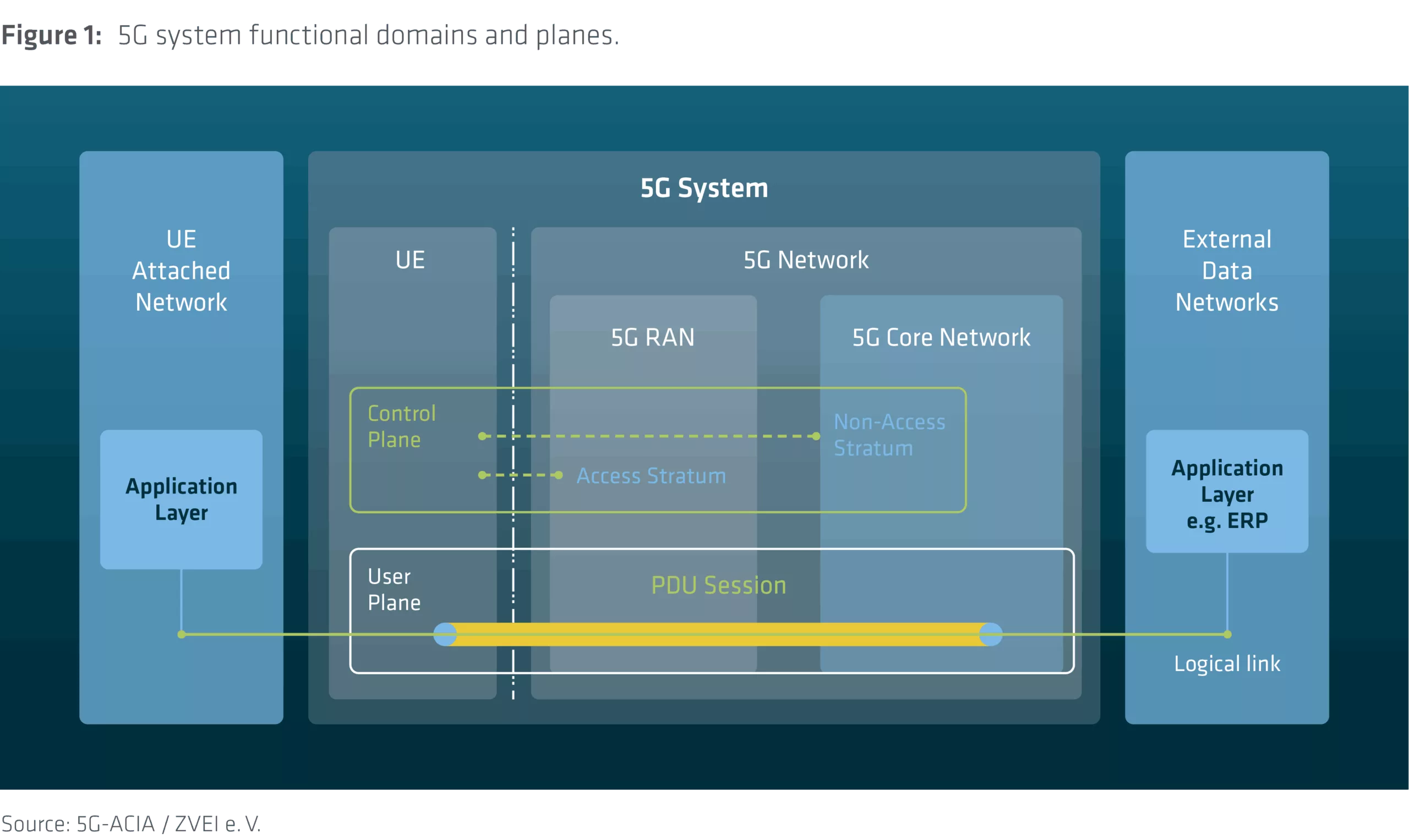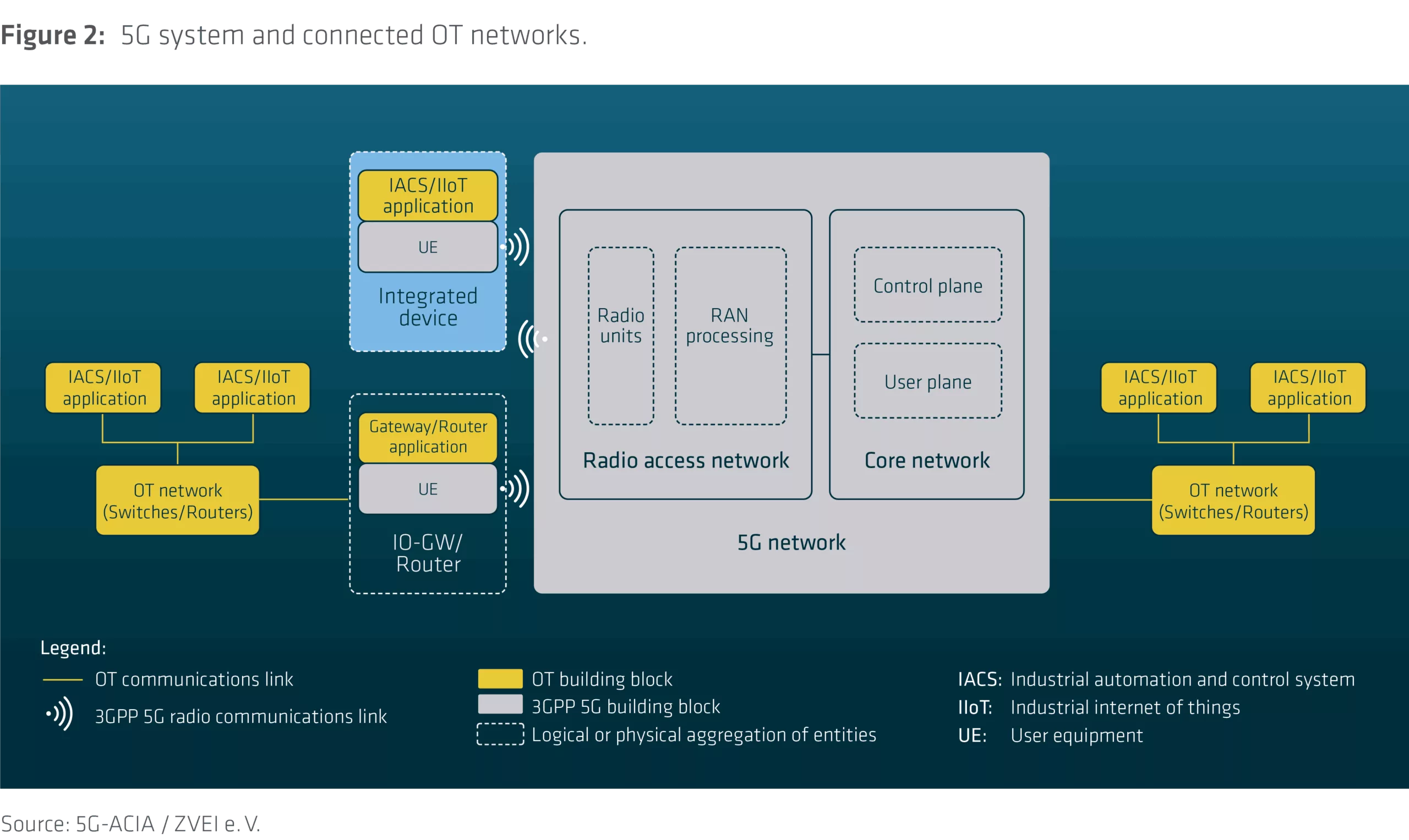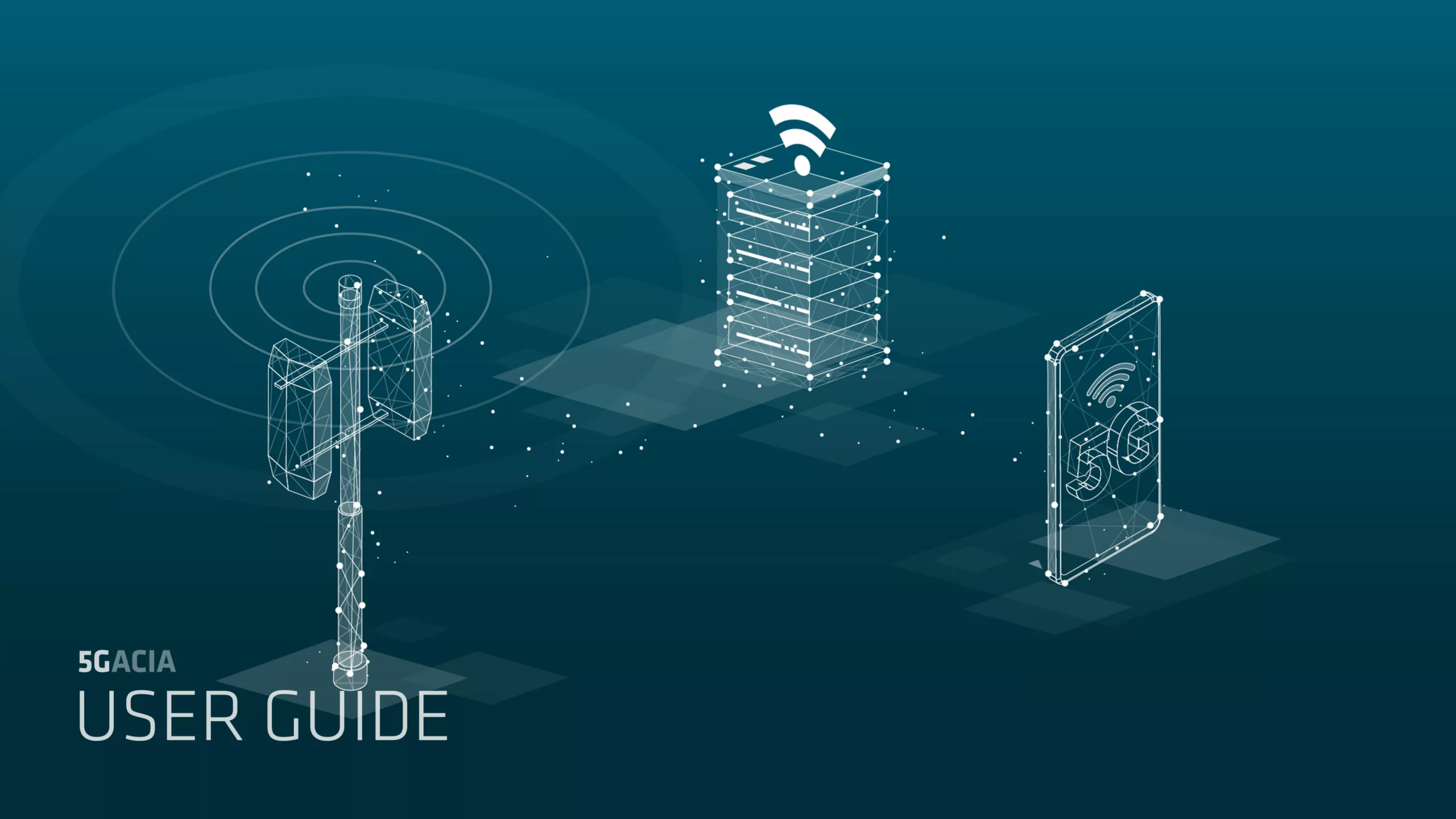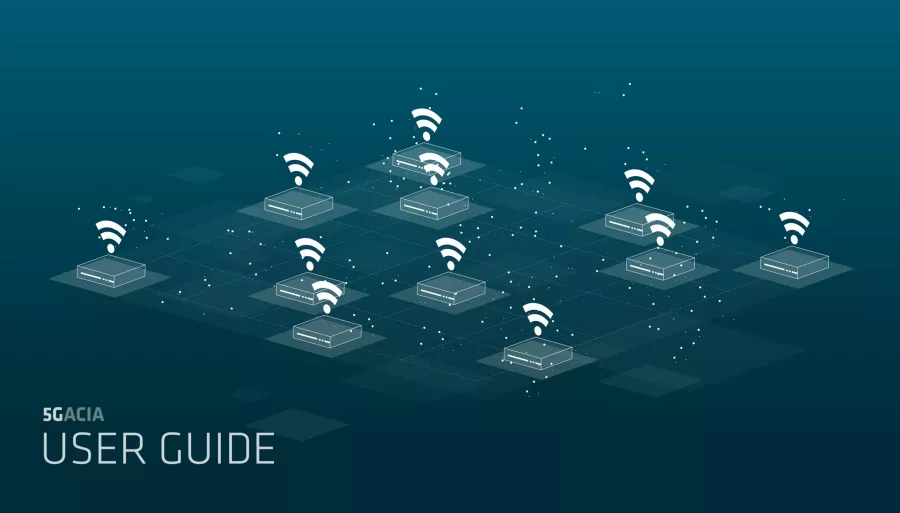The high-level functional domains of the 5G system are illustrated in Figure 1, which highlights its primary function: connecting a 5G device, known as the User Equipment (UE), to external data networks through the 5G network. Figure 2 provides an overview of the connection to the OT network. For more information on UEs, refer to the topic “What is a UE?”


To establish and maintain connectivity for a UE, which is typically a mobile wireless device, a set of control signaling protocols and procedures have been defined in the 3GPP standards. To enable the separate development of control signaling and user data transport protocols, these two functions are split into distinct layers: the control plane (CP) and user plane (UP).
The 5G system is further divided into the 5G radio access network (RAN) and the 5G core network (5GC). For more information on RAN and 5GC, refer to the topic “5G NPN Deployment Options.” The RAN typically includes a RAN processing unit and a radio unit, which can take the form of macro, micro, or pico radio unit cells. Macro cells cover larger outdoor areas, while micro and pico cells provide smaller coverage, often indoors. A key architectural principle is that the RAN and 5GC are designed to be as independent of each other as possible, allowing for separate development and scaling. This flexibility means that different architecture varieties are supported, such as one 5GC supporting multiple different RANs.
Furthermore, the protocols for UE/5GC and UE/RAN connections are designed independently within two separate layers: the Access Stratum (a set of protocols specific to the access technology, e.g., for NR, for non-3GPP systems, etc.) and the Non-Access Stratum (a set of protocols independent of the underlying Access Stratum protocols), respectively.
UP connectivity is based on the packet data unit (PDU) session, which serves as a tunnel between the UE and a specific data network (DN). The logical link represents the transfer of information between one or more applications in the UE or the network connected to the UE and one or more applications in external data networks (e.g., ERP systems). The logical link addresses the end-to-end requirements defined by 5G-ACIA.
The 5G system is responsible for managing the PDU session layer and its associated functions, such as IP address management, mobility, QoS, policy, security, and charging. The PDU session is carried over the underlying transport networks, including the radio connections between the UE and the 5G RAN. This “tunneled user plane” is decoupled from the transport layer, allowing network operators to deploy any transport technologies independently.
The 5G system architecture is designed with high modularity. This modular approach is evident in the separation of functional domains, layers, and planes that are independent of each other, allowing for independent development and scaling. Modularity is further reinforced by dividing functional domains into distinct functional entities, known as network functions (NFs), which are part of the 5G system’s control plane.
Additionally, the 5G system offers the flexibility to control network access based on radio access technologies and frequency bands. This enables the network to direct a UE toward a specific public or private network, serve the UE with a tailored set of core network functional entities, and route user data to specific service networks, all through logical separation. This capability ensures that 5G network components can be customized to serve different user groups and applications based on the subscription and, optionally, configurations in the UEs.

